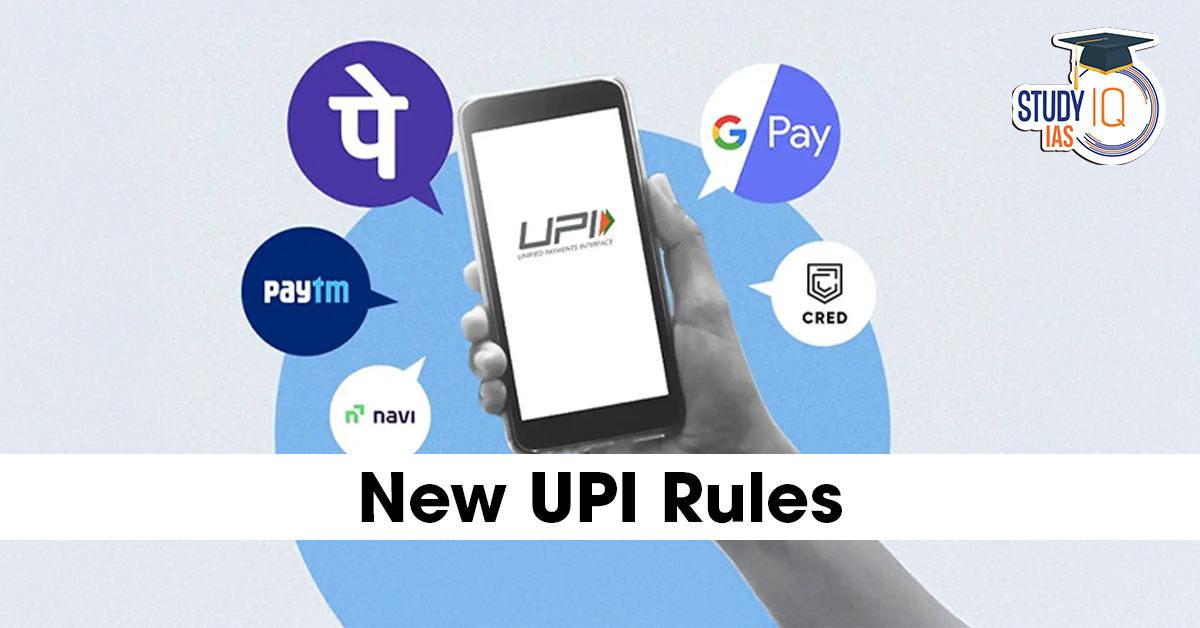Table of Contents
With over a billion transactions processed monthly, the Unified Payments Interface (UPI) has revolutionised digital payments in India. To further streamline this system and enhance security, the National Payments Corporation of India (NPCI) has implemented new UPI rules from August 1, 2025. These changes aim to curb fraud, reduce system overload during peak hours, and ensure a smoother user experience.
If you regularly use UPI apps like Google Pay, PhonePe, Paytm, or BHIM, here’s what you need to know.
Key Highlights of New UPI Rules 2025
The new UPI rules, effective August 1, 2025, introduce daily limits on balance and bank detail checks, restrict autopay timings to non-peak hours, and ensure faster transaction status updates. Users will now see the recipient’s name before payment, and UPI apps must comply with stricter National Payments Corporation of India (NPCI) guidelines to enhance security, reduce fraud, and improve transaction reliability.
| Feature | Old Process | New UPI Rules from August 1, 2025 |
|---|---|---|
| Balance Checks | Unlimited | Max 50 times/day; may be limited during peak hours |
| Autopay Timing | Anytime | Only during non-peak windows: – 12 AM – 7 AM (Some NPCI versions state: Before 10 AM, 1–5 PM, after 9:30 PM) |
| Autopay Attempts | Unlimited retries | 1 main attempt + 3 retries per mandate |
| Transaction Status | Often showed “pending” | Now must show success/failure within seconds Only 3 status checks allowed, 90 seconds apart |
| Linked Bank Account Checks | No limit | View bank list 25 times/day/app only |
| Recipient Name Visibility | Often not visible | The registered name is shown before the transaction |
| Penalties for Non-compliance | Not defined | API restrictions, onboarding suspensions, and monetary fines for UPI apps |
Detailed Breakdown of the New UPI Rules
1. Limited Balance Enquiries
You can now check your UPI-linked bank balance only 50 times per day. NPCI may further restrict or block such requests during peak transaction hours to reduce system stress. Additionally, balance visibility will now be available automatically with each transaction.
2. Restricted Autopay Timings
Recurring UPI payments like SIPs, OTT subscriptions, and life insurance premiums will only be processed between 12 AM and 7 AM (some NPCI guidelines allow alternate slots as well). This aims to offload the traffic from high-usage times. You’ll get 1 main attempt and 3 retries for payment deduction. If all attempts fail, the mandate will be cancelled.
3. Faster Confirmation of Pending Transactions
One of the most frustrating UPI experiences is a pending status that lasts for minutes or even hours. From now on, transactions must resolve within seconds, showing either success or failure. Users can only check the status 3 times, with a minimum 90-second gap.
4. Account Details Visibility and Consent
Users can now check which banks are linked to their mobile number via the UPI app only 25 times a day. You must give explicit consent each time before viewing these details. This limits misuse and enhances privacy.
5. Recipient Name Before Payment
Before sending money, the receiver’s registered name will be displayed on your screen to prevent mistakes and fraud. This transparency will help users avoid transferring funds to the wrong person.
6. Strict Compliance Measures for UPI Apps
NPCI has stated that if any UPI service provider fails to implement these rules by July 31, 2025, penalties may be applied. These may include:
-
API access restrictions
-
Suspension of onboarding new users
-
Monetary fines
-
Other corrective measures
These are targeted at UPI platforms—not end-users—to ensure secure and smooth transactions.
Why These UPI Changes Matter
These new guidelines:
-
Improve security and reduce fraud
-
Prevent system overload
-
Enhance user experience
-
Ensure real-time visibility of your money


 Defence Acquisition Council (DAC): Role,...
Defence Acquisition Council (DAC): Role,...
 Alternate Wetting and Drying (AWD): A Cl...
Alternate Wetting and Drying (AWD): A Cl...
 Makaravilakku Festival: Significance, Ri...
Makaravilakku Festival: Significance, Ri...

























